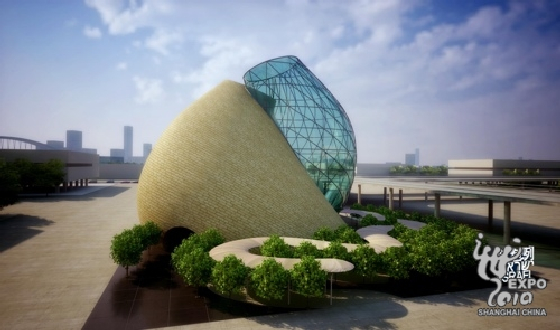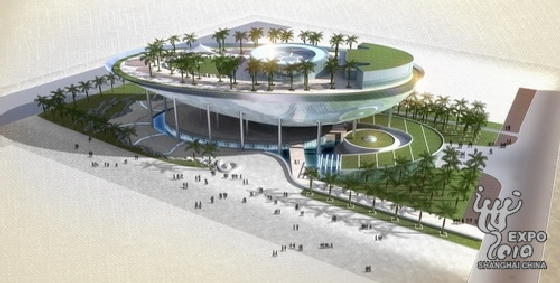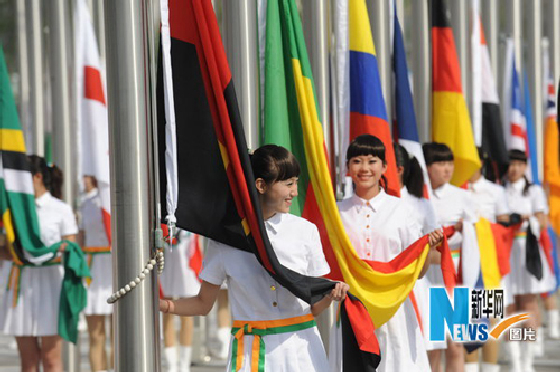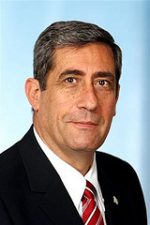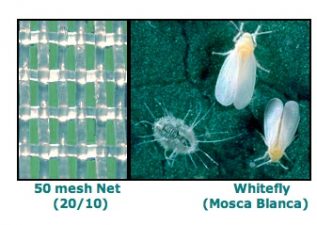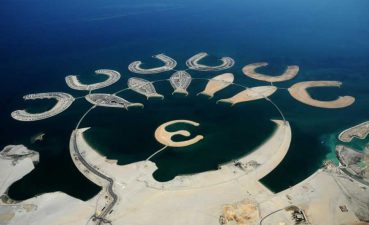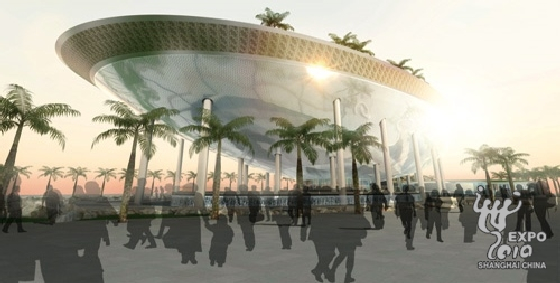 Despite its claim to promote sustainable urban development practices, the world’s largest, disposable Expo invites irony and criticism.
Despite its claim to promote sustainable urban development practices, the world’s largest, disposable Expo invites irony and criticism.
The first ever world fair took place in 1851 at Prince Albert’s behest. That fair was initiated to display participating nations’ industrial prowess. The tradition continues with ever-increasing largesse, culminating in this year’s World Expo that officially opened yesterday, May 1st. Countries and corporations will display elaborate pavilions that best represent their cultural and industrial brand until the expo’s closure at the end of October, 2010, which is expected to draw 70 million spectators. Israel’s half stone, half glass pavilion is one of several Middle Eastern pavilions on display, which in part highlights the region’s interest in cultural and business exchange with China.
In an article for the New York Times, Ted Plafker criticizes Shanghai’s expo theme – “Better Cities, Better Life” – as well as its goal to promote sustainable urban development practices. He notes that, “the huge international event champions priorities that hardly seem to square with spending hundreds of millions of dollars on the construction of nearly 200 booths and buildings, nearly all of which are designed to last only for the six-month duration of the show.”
At this World Expo, it seems corporations trump countries in a stunning display of coordinated un-sustainability. Sixty of the most profligate pavilions belong to large corporations, Plafker claims. One notable exception, however, is Saudi Arabia’s $164 million national pavilion. Called “Vitality of Life,” the pavilion displays a giant upside-down boat shaped like a moon that is surrounded by deserts and seas and 150 date palms. The palms are planted with Chinese trees to draw attention to Saudi Arabia’s friendship with the Chinese. The 6000 sq m pavilion features the largest Imax screen on earth, 1600sq m of pixels designed to showcase short films, and will celebrate its National Pavilion Day on September 23.
Plafker says that in addition to participant spendthrift, Shanghai spent $45 billion to prepare for the World Expo, which he says is roughly equivalent to what Beijing spent for the 2008 Olympics. Despite this, much of that expenditure was used to improve the city’s infrastructure and Shanghai received kudos from the United Nations Environmental Program (UNEP) for managing pollution levels despite population growth.
Even so, at the end of October almost all of the pavilions will be removed or demolished; we at Green Prophet have to hope that residue materials will at least be recycled rather than sent to Shanghai’s landfills, and that the next Expo in South Korea will live up to its motto.
To learn more about your country’s exhibit at the Shanghai World Expo 2010, click here.
:: Via NY Times
For More News from Saudi Arabia:
Mecca Becomes Mecca for Drugs
AIA Names Saudi’s KAUST In 2010 Top Green Projects
Saudi Arabia to Build Musma Park – The Mideast’s Largest Environmental Tourism Park

